From first 999 call to stay-put advice: key points from Grenfell inquiry
Reports running for thousands of pages shed new light on the fire in west London.

Thousands of pages of expert reports and a comprehensive opening statement from the Grenfell Tower inquiry’s top lawyer have shed fresh light on the fire last June.
Here, the Press Association looks at the major details which emerged about the tragedy on Monday.
Cause of the fire
Two experts agree that the origins of the fire were undetermined. It was previously suggested by the Metropolitan Police that a fridge-freezer in the fourth floor flat was to blame, but Professor Luke Bisby said there was “insufficient evidence” to support this.
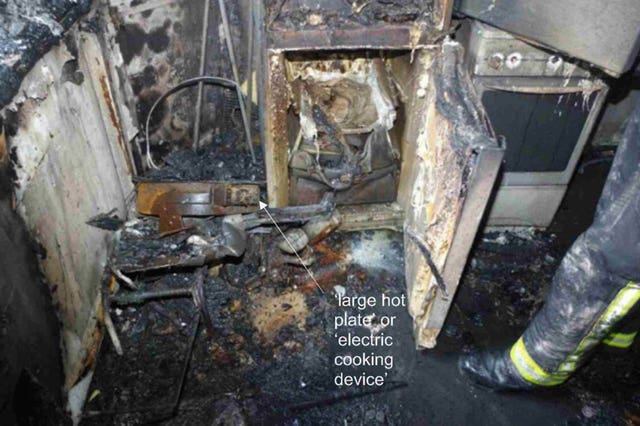
On Monday, the inquiry was played audio from the initial emergency call made on the night of the fire.
Behailu Kebede, in whose flat the blaze had begun, rang 999 at 12.54am.
He told the operator: “Quick, quick, quick. It’s burning.”
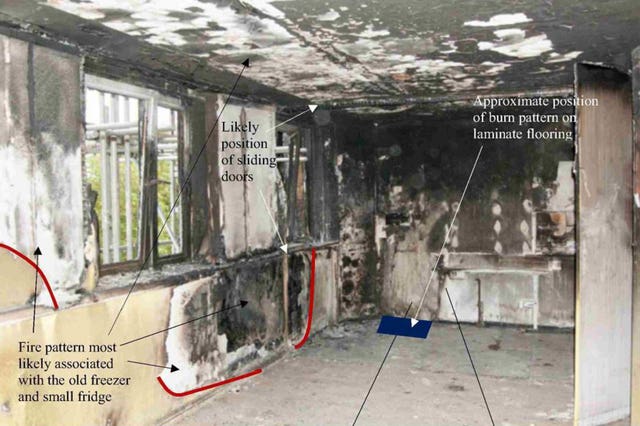
It is believed that absence of fire-proof stops around the frame of Mr Kebede’s window allowed the flames to eat through and reach the flammable material behind.
Once there, it shot up the side of the building in a matter of minutes. It is believed that the Reynobond cladding panels were the main fuelant of the blaze, rather than the insulation.
The fire stops between each floor had not been correctly installed, meaning there was nothing preventing the fire jumping between levels.
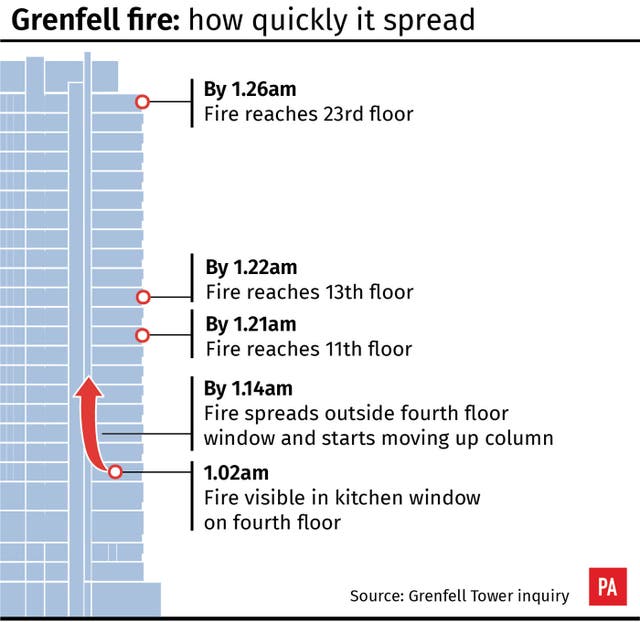
Dr Barbara Lane said she found “no evidence” that major bodies involved in the refurbishment of Grenfell Tower knew how the rainscreen cladding materials would perform in a fire.
This included a risk assessment of the building carried out by the London Fire Brigade and Tenant Management Organisation, which did not mention the behaviour of the cladding in a fire.

Fire safety measures within the building were largely non-compliant with regulations, one report said.
This included faulty fire doors, ineffective fire lifts and a inadequate ventilation system. This had terrible consequences, as the only escape route in the building – the stairwell – became clogged with smoke and was then ravaged by fire.
Dr Lane said a “culture of non-compliance” appeared to exist in the maintenance of the tower.
The unforgiving conditions on the night meant that firefighters could not reach the upper levels of the building, as they could not create a bridge above floor four. It is believed none made it above floor 20 until late afternoon.
“The ultimate consequence was a disproportionately high loss of life,” due to firefighters not being to breathe for long enough to carry out prolonged rescue efforts, the report said.
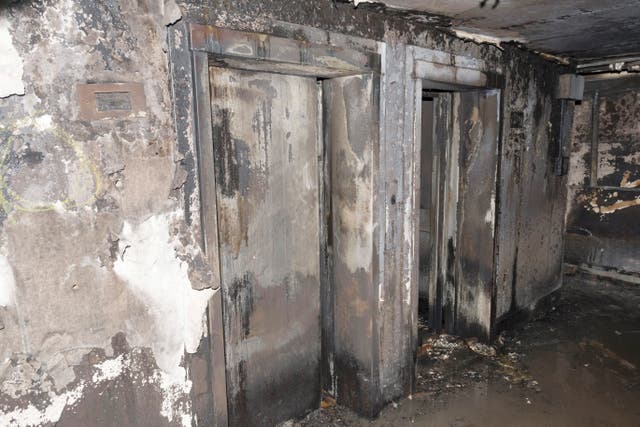
It is believed that one reason the stairwell became so impassable was due to doors being left open by firefighters’ hoses and, in one case, a dead body.
This allowed smoke to shroud the escape route and ultimately let the flames in.

The advice that the residents stay put in the event of a fire was futile within half an hour of it starting, at 1.26am, Dr Lane claimed.
There was concern expressed in her report that it took so long between the point at which smoke entered the stairwell – 1.40am – and the plan eventually being abandoned at 2.47am.
This was particularly the case after a major incident was declared just after 2am, she said.
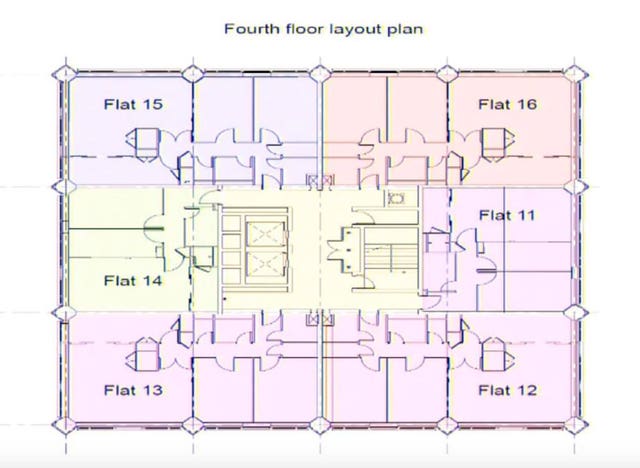
The reports mapped out where bodies were recovered from the tower.
Three people jumped from windows and were found outside. Most of the other casualties were discovered in their own flats, but 29 had travelled to other parts of the tower.
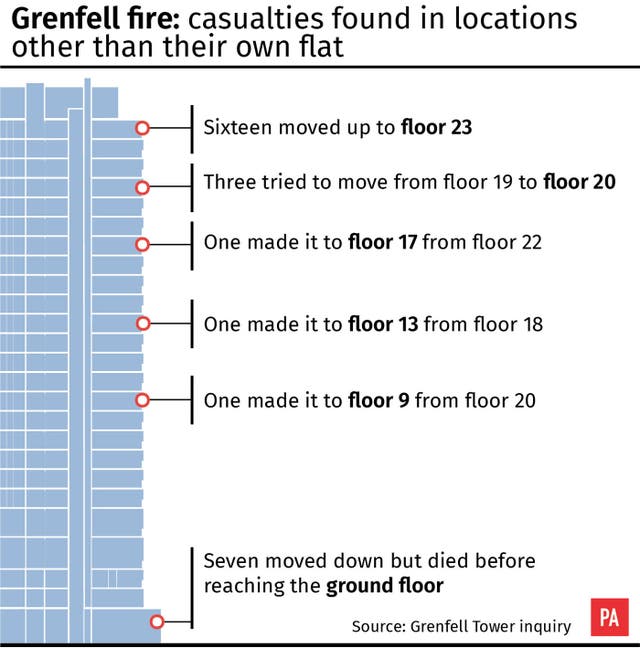
Three victims were found either in the stairs or in the adjacent lobby, “suggesting they attempted to travel down the egress stair”.





